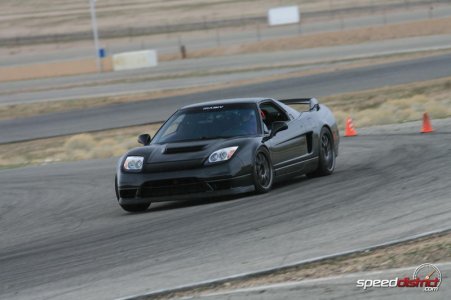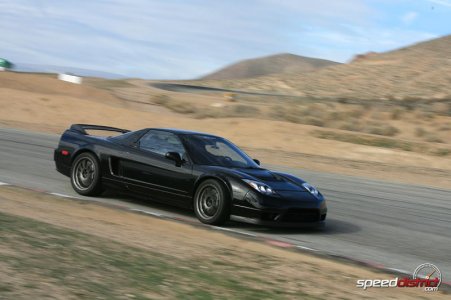Regarding adjustable sway bar settings, I notice that the majority of recommendations on here are to have the front bar at full stiff and the rear bar (if any) at full loose. I'm not a suspension guru, but based on what I've read and personal limited experience, I would think that would introduce a ton of understeer. Ultimately, it sounds like a safe setup but would also kill the fun.
To give you a bit of a background of my current suspension/chassis setup. The list below is also in order of when the parts were installed, the LoveFab chassis brace being the last thing added:
- KW V3
- GT-Spec front lower chassis brace
- NSX-R front frame stabilizer bar
- LoveFab rear targa brace
- SOS swaybars (front & rear)
- LoveFab front upper chassis brace
For my setup, I chose to keep things balance (mid stiff front and rear). Prior to adding the last LoveFab front brace, those settings made the car handle beautifully neutral. However, after adding the last brace, I noticed that initial turn-in and understeer are both noticeably worse.
Ideally, I don't want to remove the LoveFab upper chassis brace because, aside from the unexpected negative side effects, it actually does greatly improve rigidity on my targa. Steering vibration at higher speeds and cowl shake are significantly reduced and the car just feels much more solid. That said, I also miss how the car handled before the brace so after winter is over, I intend to try and dial out the turn-in and understeer.
To do that, I was thinking about adjusting two things:
1) Loosening up the front sway bar to its loosest setting
2) Adjust my alignment specs to increase toe-out (currently at +0.10 degrees L+R, +0.20 degrees total)
Are these bad or dangerous ideas? Could the LoveFab front chassis brace be making my car TOO stiff to the point that there isn't enough load on the outer tire in corners and I'm actually losing grip as a result?
To give you a bit of a background of my current suspension/chassis setup. The list below is also in order of when the parts were installed, the LoveFab chassis brace being the last thing added:
- KW V3
- GT-Spec front lower chassis brace
- NSX-R front frame stabilizer bar
- LoveFab rear targa brace
- SOS swaybars (front & rear)
- LoveFab front upper chassis brace
For my setup, I chose to keep things balance (mid stiff front and rear). Prior to adding the last LoveFab front brace, those settings made the car handle beautifully neutral. However, after adding the last brace, I noticed that initial turn-in and understeer are both noticeably worse.
Ideally, I don't want to remove the LoveFab upper chassis brace because, aside from the unexpected negative side effects, it actually does greatly improve rigidity on my targa. Steering vibration at higher speeds and cowl shake are significantly reduced and the car just feels much more solid. That said, I also miss how the car handled before the brace so after winter is over, I intend to try and dial out the turn-in and understeer.
To do that, I was thinking about adjusting two things:
1) Loosening up the front sway bar to its loosest setting
2) Adjust my alignment specs to increase toe-out (currently at +0.10 degrees L+R, +0.20 degrees total)
Are these bad or dangerous ideas? Could the LoveFab front chassis brace be making my car TOO stiff to the point that there isn't enough load on the outer tire in corners and I'm actually losing grip as a result?











